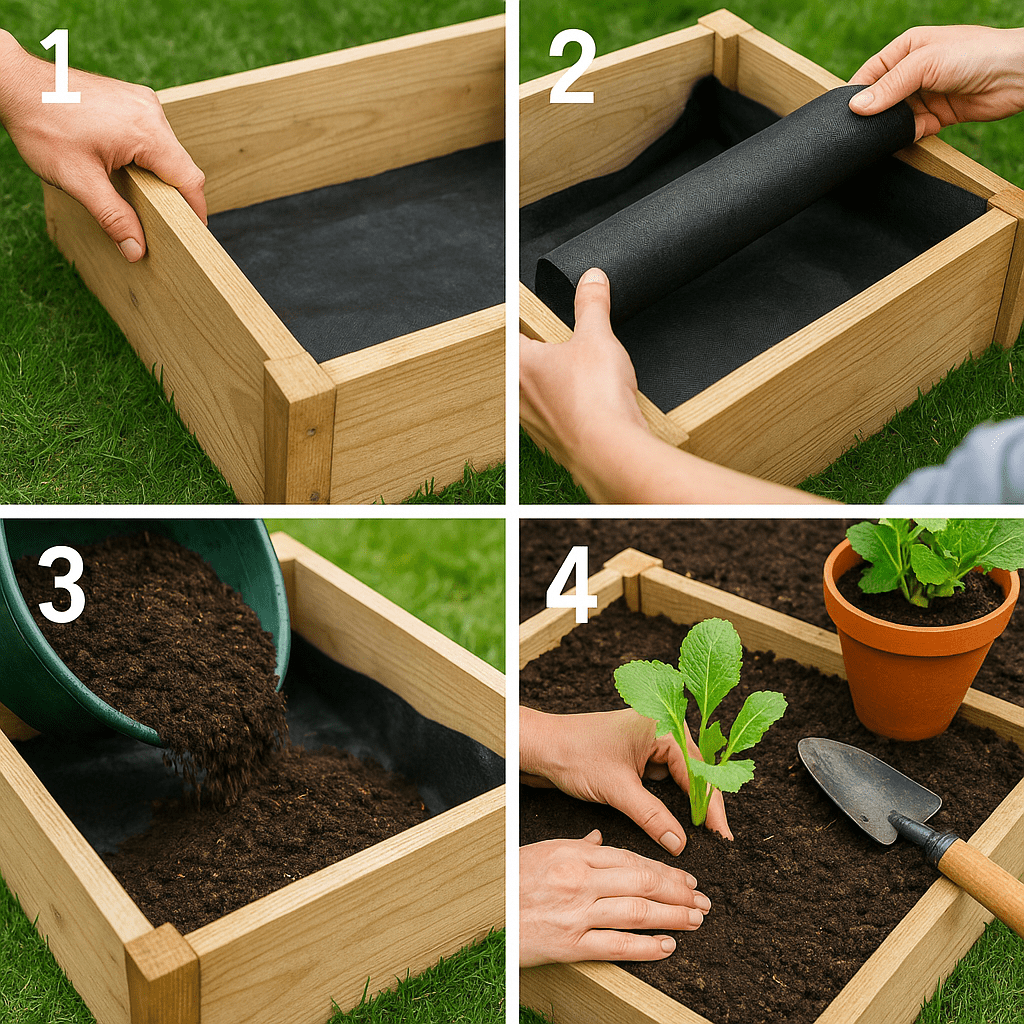Creating a thriving garden doesn’t require vast land or complex setups. With just one square meter of space, you can cultivate a surprising variety of herbs, vegetables, and even flowers. In this guide, we’ll explore what you can grow in a one-meter square garden and how to maximize your yield in a compact space.
Why One-Meter Gardens Are Perfect for Urban Spaces
Small-scale gardens are becoming increasingly popular among city dwellers for several reasons:
- Space-saving: Ideal for balconies, patios, rooftops, or tiny yards.
- Low maintenance: Easier to manage and water.
- Sustainable: Encourages home-grown food and reduces waste.
- Cost-effective: Requires fewer resources and tools.
This method is also excellent for beginners or those testing their green thumbs.
Planning Your One-Meter Garden
Choose the Right Location
Ensure your square meter receives at least 6 hours of sunlight per day. A south-facing spot works best. If natural sunlight is limited, consider using grow lights.
Build or Buy a Raised Bed
A raised garden bed defines your square meter and improves drainage. You can build one using recycled wood or purchase a prefabricated frame.
Tip: Use quality potting soil rich in compost for optimal growth.
Divide Into Square Sections
For efficient use of space, divide the garden into 9 or 16 square sections using string or wood strips. This technique, known as square-foot gardening, helps organize and space out your crops.
What to Grow in a One-Meter Square Garden
Herbs (Compact and High-Yield)
- Basil: Grows quickly and thrives in sunlight.
- Parsley: Great for partial shade and regrows after cutting.
- Cilantro: Ideal for cool weather.
- Chives: Hardy and useful in many dishes.
Leafy Greens
- Lettuce: Quick-growing; harvest multiple times.
- Spinach: Prefers cooler climates and rich soil.
- Arugula: Peppery flavor and fast maturity.
You can grow 4–6 heads per square for most greens.
Root Vegetables
- Radishes: Grow in under 30 days; 16 per square.
- Carrots: Long varieties need deeper soil; 9–16 per square.
- Beets: Offer both edible roots and greens.
Fruit-Bearing Plants
- Cherry Tomatoes: One plant per square; use a trellis.
- Peppers: Bell or chili peppers thrive in warm areas.
- Bush Beans: Compact varieties offer high yield.
Edible Flowers
- Nasturtiums: Add color and are entirely edible.
- Calendula: Used in teas and skin treatments.
Step-by-Step: Planting Your Garden
Step 1: Prepare the Soil
Loosen the soil and mix in compost. Level the surface and moisten it lightly.
Step 2: Grid and Plan
Lay out your grid. Plan your crops based on sunlight, spacing, and companion planting principles.
Step 3: Plant Seeds or Seedlings
Follow package instructions for seed depth and spacing. Water gently.
Step 4: Maintain Regularly
- Water consistently but avoid overwatering.
- Thin overcrowded plants.
- Fertilize monthly with organic compost or liquid feed.
Step 5: Harvest and Replant
Once a crop matures, harvest and reseed the section for continuous yield.

Smart Tips to Maximize Growth
- Companion Planting: Pair plants that support each other (e.g., basil with tomatoes).
- Vertical Growing: Use stakes or trellises for vining crops.
- Succession Planting: Stagger plantings for a constant harvest.
Eco-Friendly Practices for Small Gardens
- Collect rainwater for irrigation.
- Reuse kitchen scraps as compost.
- Use recycled containers or fabric grow bags for vertical expansion.
Where to Use Your Mini Garden
- Apartment balconies
- Courtyard corners
- Rooftop setups
- School or community garden boxes
Looking for high-quality seeds and compost? Visit Burpee Gardening Supplies for trusted options.
Explore more compact garden solutions in our article on Herbs Indoors with Zero Experience.
Conclusion: Big Rewards in a Small Space
With thoughtful planning, even a one-meter garden can provide a steady stream of fresh produce and herbs. It’s a fantastic way to embrace sustainability, save money, and enjoy gardening regardless of your available space.
Save this guide and start your garden this weekend—or share it with a friend who loves fresh food and DIY projects!
FAQ: Growing in a One-Meter Square Garden
Q1: Can I grow enough food for meals in a one-meter garden?
Yes. While it won’t replace a grocery trip, you can grow enough herbs and vegetables to supplement several weekly meals.
Q2: How do I prevent pests in such a small garden?
Use natural deterrents like marigolds, neem spray, or homemade garlic water. Companion planting also helps.
Q3: Can I grow during all seasons?
Yes, with planning. Use cold frames or cloches in winter, and rotate crops by season.
Written by Kate Smith | Plant Care Enthusiast & Urban Gardener
